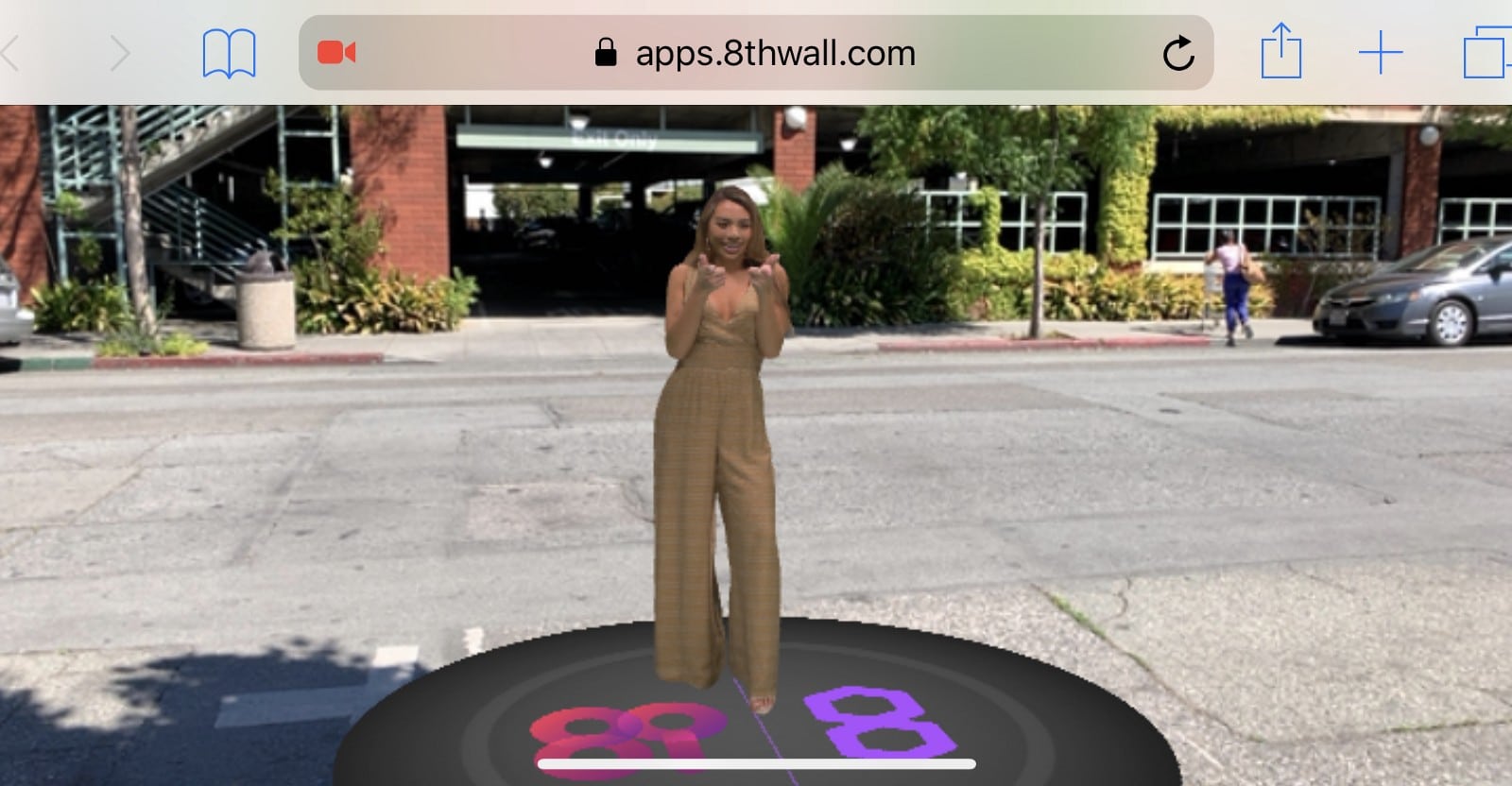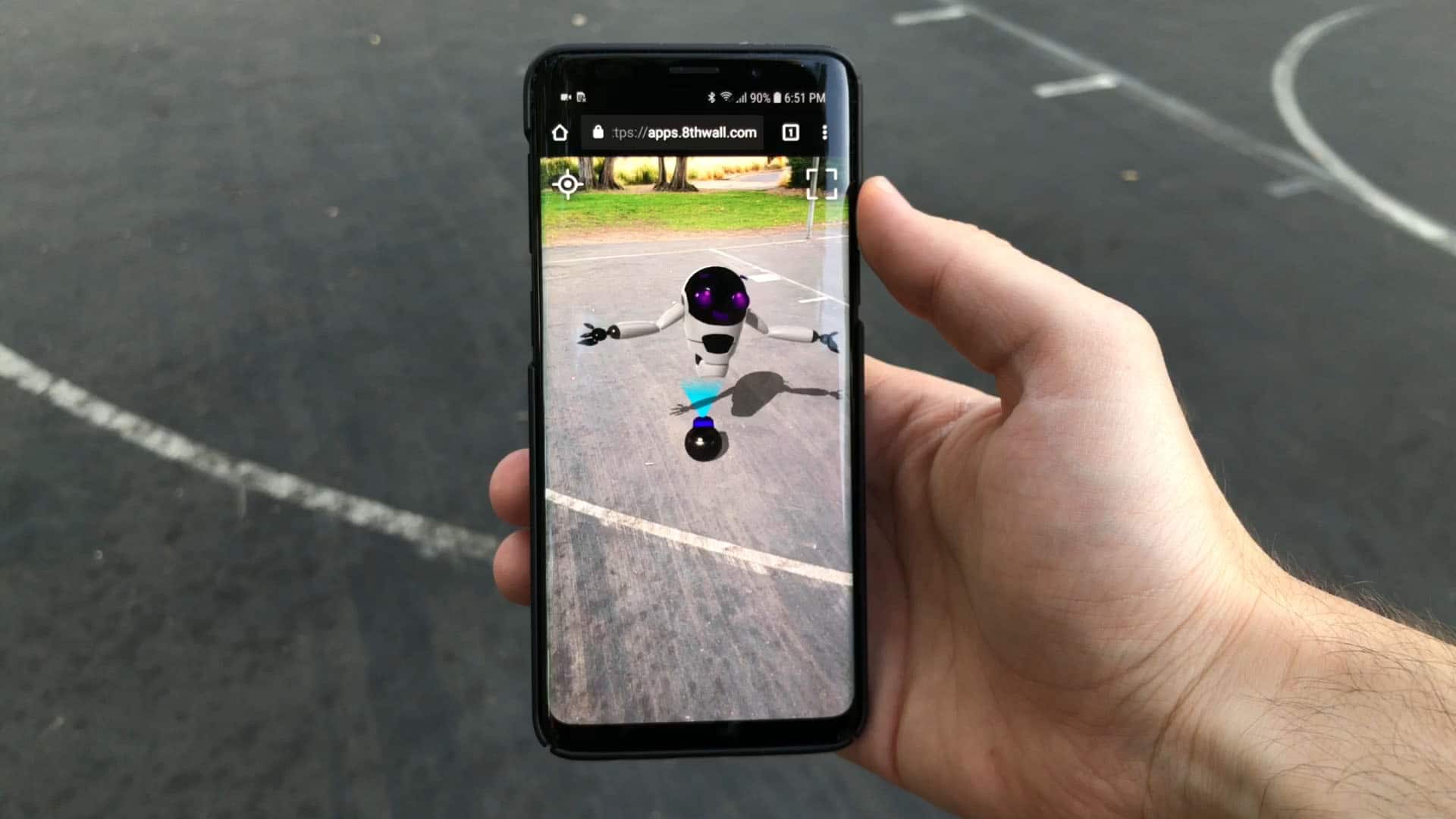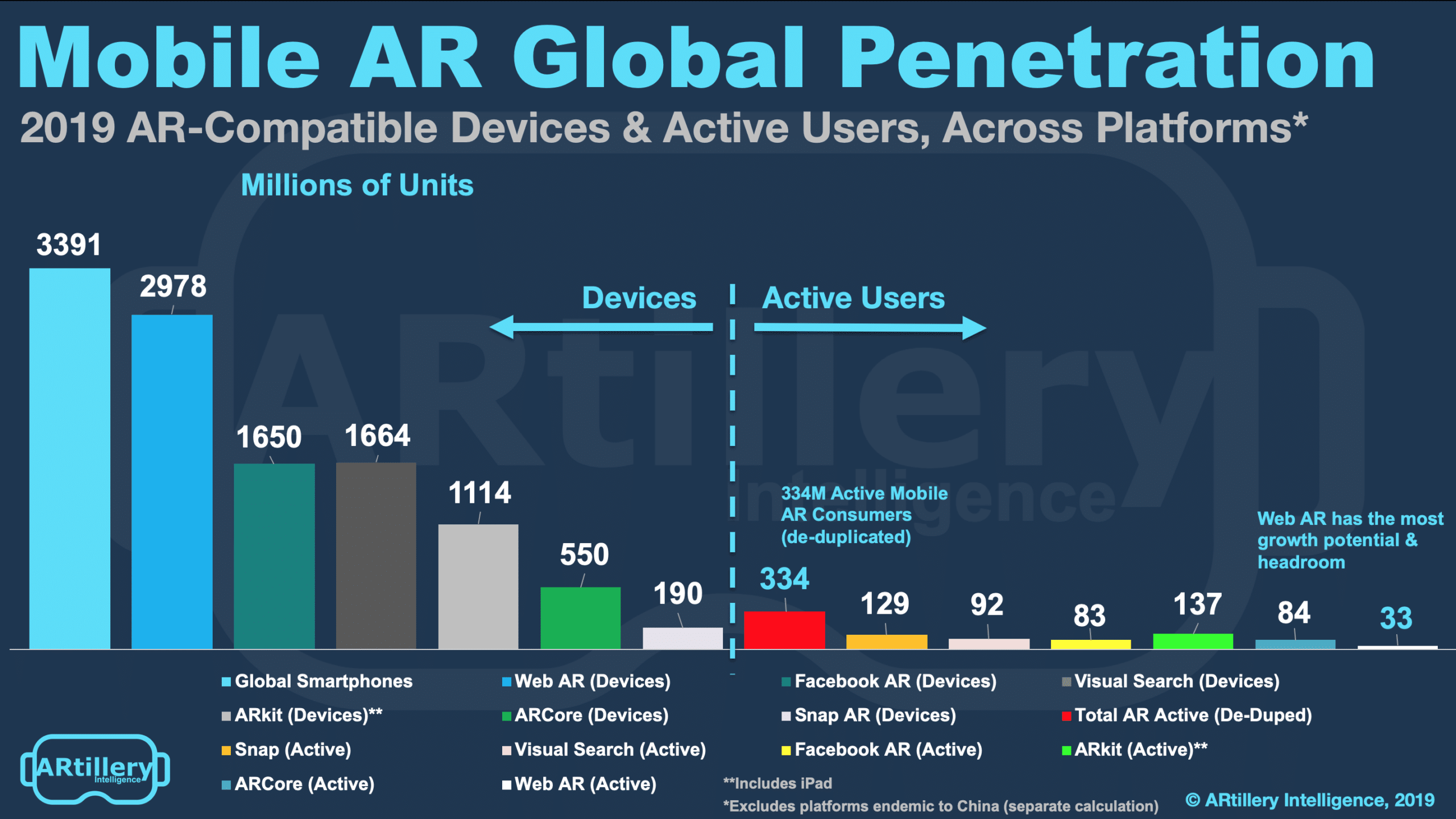
AR Insider Interviews is a series that profiles the biggest innovators in XR. Narratives are based on interviews with subjects, but opinions and analysis are that of AR Insider. See the rest of the series here.
There’s growing realization that apps aren’t the optimal vessel for AR. Yet in the case of mobile AR, it’s born on a device where apps rule. 90 percent of mobile users’ time is spent in apps as opposed to the browser. Can AR break that cycle and instead condition users towards the web?
This involves AR that’s launched from the mobile browser. Advantages include dynamism for AR’s serendipity and short sessions, versus the friction of app stores and downloads. All that “activation energy” dampens AR adoption, which is already challenged by its nascent and unproven status.
“Web AR has some nice advantages,” 8th Wall CEO Erik Murphy-Chutorian told AR Insider. “You’re not tied into a social network, you’re not tied into a platform, you don’t have to go to an app store and you aren’t restricted on devices. You really can get on most people’s phones.”
8th Wall’s eponymous 8th Wall Web is an AR engine that works on mobile browsers (see our previous profile). Built on standards-compliant JavaScript and WebGL, it has SLAM, positional tracking and all the trappings of “true AR” most often seen in native apps, but without the bloat.

Advantage, App
Murphy-Chutorian admits that apps can have some advantages in functionality and practicality. For the former, apps can more directly tap into the hardware and sensors when using a native platform such as ARkit that has purpose-built vertical integration with the hardware.
“Apple specifically has done a really good job of getting accurate scale in AR,” said Murphy-Chutorian “There are things like measuring if my suitcase fits inside a box, or virtual tape measures. They’ve done an excellent job getting the accuracy right for those things.”
As for practicality, apps work well when it’s something you use frequently, such as the small tray of daily-use apps like Facebook, email, messaging or a game like Candy Crush. For these few use cases, home-screen positioning and quick access can be well served by native apps.
“Apps are really good for these things that you come back for all the time, like if you’re going to sit there checking your Facebook feed multiple times per day,” said Murphy-Chutorian. “It’s almost like apps are a commitment: once you have that level of commitment, they’re appropriate.”

Advantage, Web
But some of these app advantages only apply to a limited set of high-use apps. And for newer apps, getting into that exclusive club is near impossible. So for any app developer building something today — especially in the still unproven AR category — the calculus is different.
“Say you’re a new company and you want to do something in AR… you build a native app and put it in the store. How many downloads do you get?” posed Murphy-Chutorian. “People really struggle to get their apps downloaded, and their reach and visibility is much smaller.”
But things open up a bit in web AR, as you can plant universally-operable web links wherever you have existing presence. That includes everything from your website to social media to physical store signage. It also includes emerging AR distribution channels like email and messaging.
“Any source of traffic you have becomes an opportunity to show AR,” said Murphy-Chutorian. “Another great area for reach is people who own restaurants, stores or sell goods that are printed on anything. It’s AR on the back of the toy you just bought or the cereal box or Starbucks lid.”
Along with that comes functionality for all the things the web does, added Chutorian. If operating outside of apps or social walled gardens like Facebook, you can connect the AR experience to your payments processor, or integrate the Google Maps API for location-relevant content.
“Those kinds of web combinations let you build much more powerful things than what you can do on AR apps and social networks.”

Numbers Game
These types of commerce outcomes could represent AR’s next phase, as it graduates from novelty to practicality. The same goes for advertising, which is projected by ARtillery Intelligence to be the leading AR revenue source by 2023, and a driver for $12.7 billion in consumer purchases.
But this vision requires more users for reach-driven brand marketers to get on board — another area Web AR could be advantaged. Going beyond the oft-cited “1 billion” ARCore and ARkit figures, ARtillery Intelligence recently quantified the full slate of mobile AR platforms.*
Among them, Web AR has the biggest growth capacity given that it has the greatest device compatibility (see chart below) but the least active users. Along with all of web AR’s technical and practical benefits explored above, this scale and headroom could be a big confidence signal.
Furthermore, the mobile AR market-sizing exercise reveals another key factor: platform fragmentation. Compared to the mature mobile market that has two platforms, AR (and VR for that matter) has several, which could further compel web AR and its cross-platform advantages.
“Magic Leap is building a software ecosystem around its product. Microsoft is doing the same with Hololens. Oculus, HTC and Playstation are doing it in VR,” said Murphy-Chutorian. “But it may be that if there is no dedicated winner, the winner becomes something that works across all of them.”

For deeper XR data and intelligence, join ARtillery PRO and subscribe to the free AR Insider Weekly newsletter.
Disclosure: AR Insider has no financial stake in the companies mentioned in this post, nor received payment for its production. Disclosure and ethics policy can be seen here.
